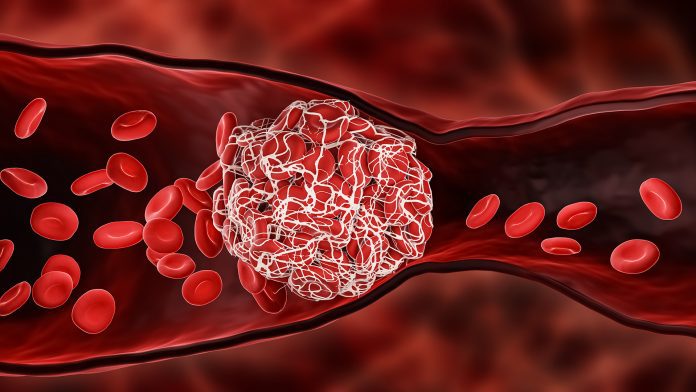
According to research from the University of Gothenburg, being overweight in childhood is a significant risk factor for blood clots in later life.
Researchers examined the body mass index (BMI) history of over 37,000 male participants and compared it to data on blood clots in adulthood. Previous research has already shown an association between obesity and blood clots; however, the influence of raised BMI in childhood and adolescents was less clear.
The study, titled ‘Overweight in childhood and young adulthood increases the risk for adult thromboembolic events’, has been published in the Journal of Internal Medicine.
What are blood clots, and why are they dangerous?
Blood clots, also known as thrombi, typically occur in the legs, often forming in blood vessels in the calf. Swelling, pain and redness are common indicators of the condition. If they are spotted and treated early, clots are not usually dangerous; however, if the clot finds its way into the lungs via the bloodstream, it can lead to life-threatening pulmonary embolisms.
The researchers examined data on 37,672 Swedish men born between 1945 and 1961. The study included information on the men’s height, weight, and BMI, first taken from school health care services at eight years old and then from medical examinations upon enrolment in the armed forces aged 20. Data on any blood clots before the age of 62 was also included.
The researchers found that high BMI at the ages of eight and 20 was linked to venous blood clots in later life. People who were a healthy weight in childhood but later became overweight in early adulthood were also at a significantly increased risk of dangerous blood clots.
They also discovered that being overweight in childhood and young adulthood also increased the risk of arterial thrombi, which are clots that stem from constricted blood vessels with fatty deposits and inflammation. However, the researchers stressed that as there were relatively few cases of arterial clots, more research is needed to confirm this association. All comparisons made by the researchers were made against a control group of individuals who were normal weight at the ages of eight and 20.
How does obesity cause thrombi?
Obesity is linked to metabolic syndromes, such as dysglycemia, elevated blood pressure, and dyslipidaemia. Overweight or obese people are also likely to have higher levels of white blood cells and platelets, as well as elevated acute-phase proteins. These conditions can lead to low-grade systemic inflammation, which alters the body’s coagulation system, increasing the likelihood of blood clots.
“Our study shows that both being overweight in childhood and overweight in young adulthood increases the risk of venous blood clots later in life. The latter, overweight when the men were young adults, proved to be a more influential factor than overweight when they were children,” said the corresponding author of the study, Lina Lilja.
“Obesity and overweight during puberty seem to have a marked impact on a person´s future risks of venous thrombi,” concluded Jenny Kindblom, associate professor and senior physician at the University of Gothenburg.






















